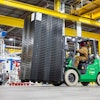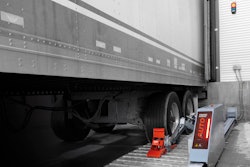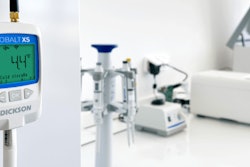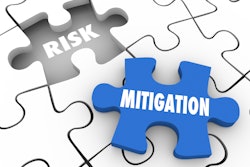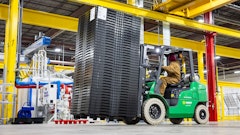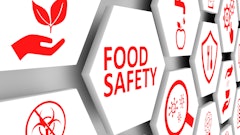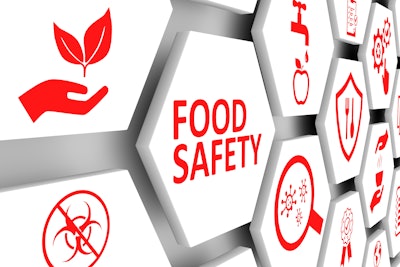
If it seems like recalls are happening more frequently, you’re not imagining things. The number of recalls doubled last year over the previous year, and these rising numbers are due to numerous factors. For instance, the industry now has better ways of detecting potential contamination issues, such as automated inspection processes and increased transparency across the food chain. Tech advancements have made it easier to identify – and flag – issues like contamination and quality control issues. That way, food brands can proactively pull potentially contaminated foods from the supply chain – ideally, before they hit the marketplace.
Although the modern era has brought many innovations and higher standards in food safety, ongoing challenges continue to create food recalls:
- Human error will always be a factor.
- Supply chains have become increasingly complex.
- The regulatory environment continues to be uncertain under the new administration.
- Companies aren’t always willing to invest in preventative measures, like technology.
While complete elimination of recalls is the aspiration, a more realistic goal is a “closer to zero” mindset. The food industry must put systems in place to continually bring the number of at-risk products in the marketplace closer to zero.
Technology will help bring us to our “closer to zero” goals
Tech solutions aimed at recall prevention can help us accomplish this “closer to zero” goal, and have become a necessity for all food businesses. Tech tools help improve data analytics, transparency, traceability, accuracy, and communication across the supply chain, which all help elevate food safety. Technologies such as Internet of Things (IoT), artificial intelligence (AI), predictive analytics, and quality management system (QMS), can identify and help combat quality issues.
Keep in mind that these tech solutions at times may temporarily increase the number of overall recalls, at the same time they will, hopefully, help prevent widespread, damaging outbreaks that threaten public health.
There were hundreds of food recalls issued in 2024, and the most common causes of these incidents were mis-labeled products and undeclared food allergens. While this statistic feels scary, many of these recalls were issued proactively – out of an abundance of caution – due to factors like a processing error on an assembly line.
Very few of the recalls involved widespread E.coli, Listeria, or Salmonella contamination. In fact, a recent study found that the vast majority (98%) of severe foodborne illnesses and related deaths in 2024 stemmed from just 13 pathogen-related food safety outbreaks, including deli meat and cucumbers, which were widely recalled. That means that most recalled products weren’t even part of an illnesses outbreak, outbreak investigation, or in national news headlines.
While the number of recalls was up last year, tech tools were – and continue to be – instrumental in mitigating risks and reducing public health threats. Tech solutions have become effective at identifying potential contamination, flagging quality control issues, and reducing foodborne illnesses in the marketplace.
Now, companies across the supply chain can rely on tech solutions to identify, locate, and remove any potentially contaminated products, ideally before they hit store shelves, restaurants, and homes. Luckily, tech tools have become increasingly accessible, affordable, and user-friendly, so food businesses of all sizes (and budgets) can rely on these solutions.
For instance:
- Predictive analytics is a game-changer, using AI and data modeling to identify patterns and anticipate potential risks before they lead to a recall.
- IoT environment monitoring’s connected sensors can track temperature, humidity, and contamination risks in real time. Any potential issues are flagged so products can be pulled before they hit store shelves.
- AI production monitoring uses video capture and process observation to ensure specification compliance.
- Blockchain for traceability allows companies to get a secure, transparent, and immutable record of product movements to enable faster response to safety concerns.
Prepare in advance
So far in 2025, food recalls have remained a constant, with ground beef, donuts, potato chips, chocolate, chicken nuggets, and more being recalled in Q1 alone. Any food business can have a food safety breach (and subsequent recall), even if they have exceptional safety practices and quality control measures in place. Therefore, it’s essential to prepare in advance to help mitigate public health risks, as well as potential financial, legal, and reputational damage.
Protecting public health must be the top priority for every food business. Provide ongoing training to ensure that all employees know exactly what to do in a recall situation – and how to minimize public health risks.
Hold mock simulations collaboratively with your trading partners. This helps identify knowledge gaps and allows you to work out any “kinks” in the system. Assign roles and be certain that people understand their responsibilities. Designate a spokesperson who is prepared to calmly relay key messages.
Reducing recalls – and aiming for a closer to zero mindset – can help protect public health and food businesses. Today, the financial costs of a single recall can reach $99.9 million in the United States. Plus, fallout from a recall can seriously damage a brand’s reputation (e.g., decreased sales, falling stock prices, negative press, factory shutdowns, etc.), especially if the recalling company tries to hide the truth or deny what happened.
Demonstrate that your company prioritizes food safety
The U.S. food supply remains among the safest in the world but, because of ongoing recalls, consumer confidence in food safety has dropped to a record low. Demonstrate to customers (and other key stakeholders) that your company takes food safety very seriously, and that you have the most sophisticated quality control processes in place. Also, relay the important message that if your organization experiences a food safety breach, you’re well-prepared to handle it swiftly, properly, and professionally. Then, make sure your actions mirror your words.
Assume the mindset of when recalls will happen, not if they will, so your team is prepared to minimize damage and protect public health when something inevitably goes wrong. Put tools and protocols in place to catch any potential issues early, to prevent large, potentially devastating, recall events.
Consider this fire safety analogy
While measures like fire drills, station coverage, fire-resistant materials, and public education can help significantly reduce house fires, they don’t eliminate them entirely – we still need fire departments! So, instead, we focus on minimizing the damage with effective responses when fires occur.
The same can be said for recall preparedness. Work proactively to prevent food recalls, but be prepared to act rapidly – and properly – to manage them when they occur to protect public health, minimize risks, and maintain your brand reputation.
While we work proactively and continuously to prevent fires and food recalls, it’s unlikely that we’ll eliminate them completely. Work toward a closer to zero goal, putting the necessary tools and processes in place, just in case you need them.




